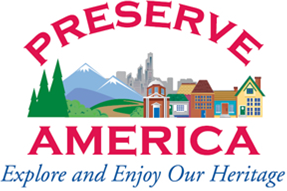Indian Bowl for Future Generations
Our Mission is to sustain, strengthen and share the culture and performing arts of the Lac du Flambeau Ojibwe community. The new Waaswaaganing Indian Bowl Living Arts & Culture Center is a cornerstone of this mission.
For 75 years, pow wows have been held on the Lac du Flambeau Reservation in Northern Wisconsin at a site overlooking Long Interlaken Lake. We celebrate our culture and traditions through dance and song, and we have welcomed visitors to join us in these celebrations. The pow wow grounds became known as “The Indian Bowl.”
In April 2012, the Tribe chartered a not-for-profit corporation called the Lac du Flambeau Cultural and Performing Arts Center, Inc. In November 2014, the Tribal Council officially changed the name to the Waaswaaganing Indian Bowl Living Arts & Culture Center.
In September 2014, the dilapidated facility was demolished, and a Ground Blessing Ceremony was held in November 2015.
Construction on the new Waaswaaganing Indian Bowl Living Arts & Culture Center began in July 2016.
We promote the Ojibwe seven teachings: honesty (gwayakendamowin), truth (debwewin), humility (agaasenimowin), love (zaagi’idiwin), wisdom (nibwaakaawin), courage (zoongide’ewin) and respect (manaatajigewin). The teachings have been passed down from generation to generation through stories and ceremonies.
Today, the oral traditions are shared by those who carry the knowledge of such things. We live so that life will be good for our children, and for seven generations of our descendants. The Indian Bowl will help ensure the preservation of our culture and traditions.
Board Continues Indian Bowl Tradition
The Board of the Waaswaaganing Indian Bowl Living Arts & Culture Center is comprised of 15 members.
Board Members include Lac du Flambeau Tribal Members and community members, making this a true community partnership.
The Board is dedicated to having a Center that serves Tribal Members, and welcomes visitors from around the world.
A Preserve America Community
In 2009, the Lac du Flambeau Chippewa Tribe was designated a Preserve America Community. Preserve America is a U.S. government program that encourages and supports community efforts to preserve and enjoy the country’s cultural and natural heritage.
The program recognizes and designates communities that protect and celebrate their heritage, use their historic assets for economic development and community revitalization, and encourage people to experience and appreciate local historic resources through education and heritage tourism programs.
Preserve America is a national initiative in cooperation with the Advisory Council on Historic Preservation; the US Departments of Defense, Interior, Agriculture, Commerce, Housing and Urban Development, Transportation, and Education; the National Endowment for the Humanities; the President’s Committee on the Arts and Humanities; and the President’s Council on Environmental Quality.

Lac du Flambeau Band of Lake Superior Chippewa
The Lac du Flambeau Tribe has inhabited the Northwoods of Wisconsin since 1745, when Chief Kiishkemun (Sharpened Stone) led the Tribe to the area.
The Chief settled our Tribe where the Bear River begins, and along the western shoreline of Flambeau Lake.
The Tribe acquired the name Lac du Flambeau from its practice of harvesting fish at night by torchlight. The name Lac du Flambeau, or Lake of the Torches, refers to this practice and was given to the Band by the French traders and trappers who visited the area.

The art of fire hunting. Painting by Nick Hockings.
We call ourselves Waaswaaganing, which means Lake of Flames in Ojibwe.
The 1854 Treaty of La Pointe established a 100,000-acre reservation for the Lac du Flambeau Band. The Tribe was officially established on May 8, 1937, when Tribal Members ratified the Corporate Charter of the Lac du Flambeau Band of Lake Superior Chippewa Indians of the Lac du Flambeau Reservation of Wisconsin.
In the early 1900s, the area became a tourist destination, especially for families from Wisconsin and the Chicago area. Since 1951, the Indian Bowl pow wow celebrations has been one of the premier Wisconsin tourist attractions.
Patrick Day
President
Mildred (Tinker) Schuman
Vice President
Emerson Coy
Treasurer
Roberta Gast
Secretary
Georgine Brown
Board Member
Grant Callow
Board Member
Cynthia Lei-Nako
Board Member
Bagwajikwe Madosh
Board Member
Nancy Peterson
Board Member
Sue Robertson
Board Member
Norm Wetzel
Board Member



